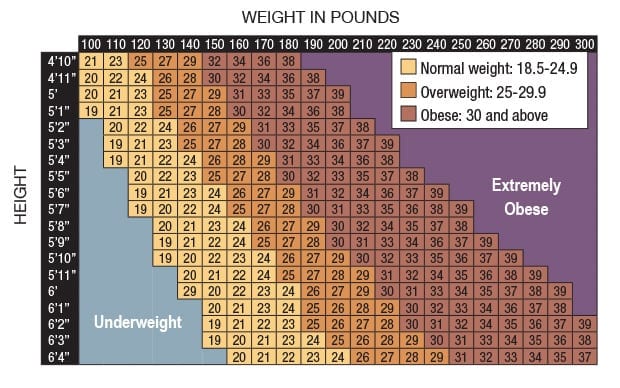How do you measure up?
Body mass index and waist measurements are the tools most used to measure obesity

1. Determine your Body Mass Index (BMI)
Although the Body Mass Index (BMI), a calculation based on height and weight, helps measure a person’s “desirable” weight, it is not always accurate. Athletic people with well-developed muscles often have a BMI higher than normal because muscle weighs more than fat. However, when combined with other measurements, such as waist size, the BMI is a helpful tool in determining whether a person should lose weight to reduce health risks.
Calculate your BMI with the quick BMI calculator
BMI Categories:
Underweight Less than 18.5
Normal weight 18.5 – 24.9
Overweight 25 – 29.9
Obesity 30 or greater
Extreme obesity 40 and above

2. Measure your waist circumference
Accumulation of weight around and above the waist (apple-shaped) rather than the hips and buttocks (pear-shaped) increases a person’s risk for cardiovascular disease.
To accurately measure your waist:
- Place a tape measure around your bare abdomen just above your hip bone.
- Be sure the tape is snug but does not push into your skin.
- Check to make sure the tape measure is level all the way around.
- Relax, breathe out and measure your waist.
Desirable Waist Measurements
Women: 35 inches or less
Men: 40 inches or less

3. Calculate your disease risk for
- Type 2 diabetes
- hypertension
- heart disease — relative to your BMI and waist circumference.







